| Polynomial Equations, Noise & Extrapolation |

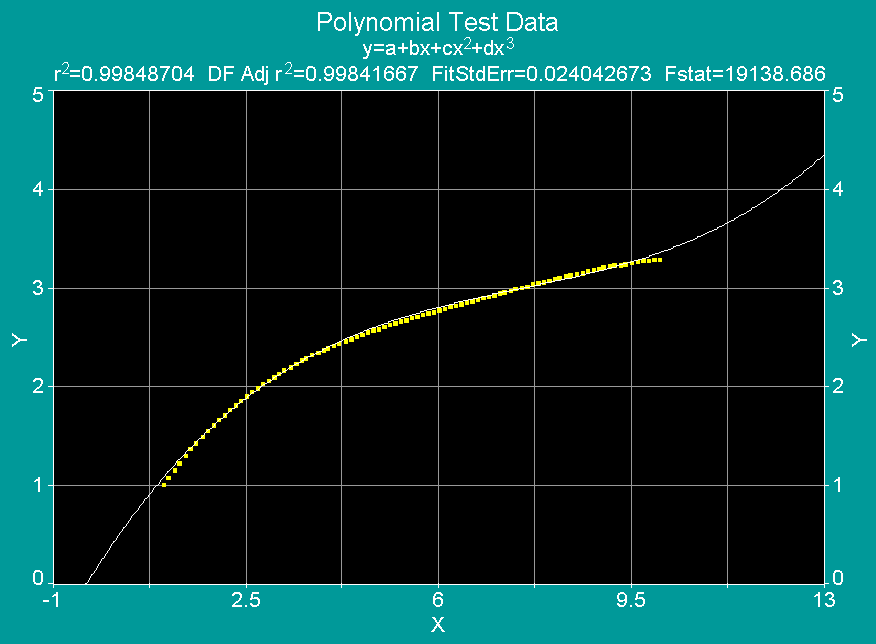
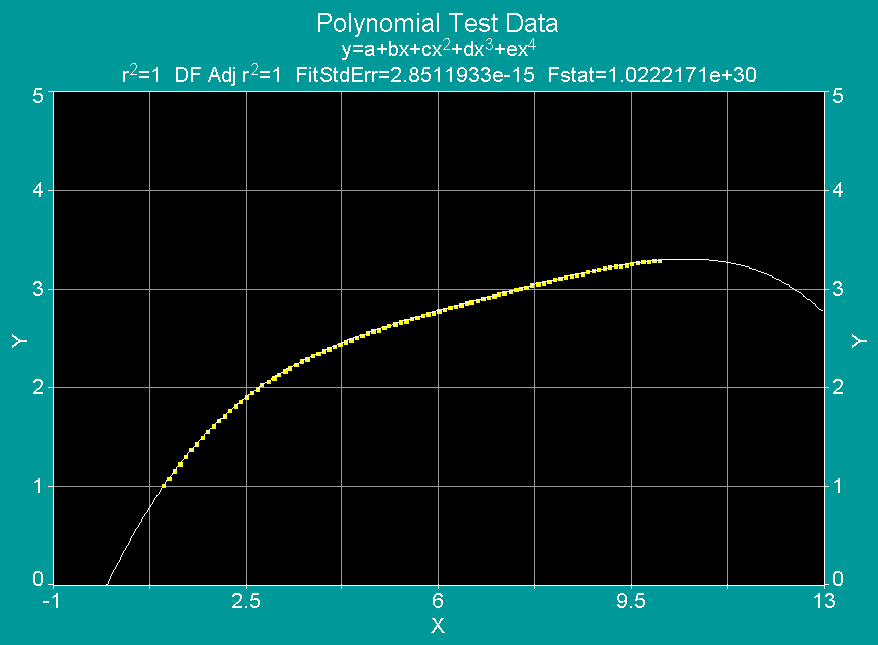
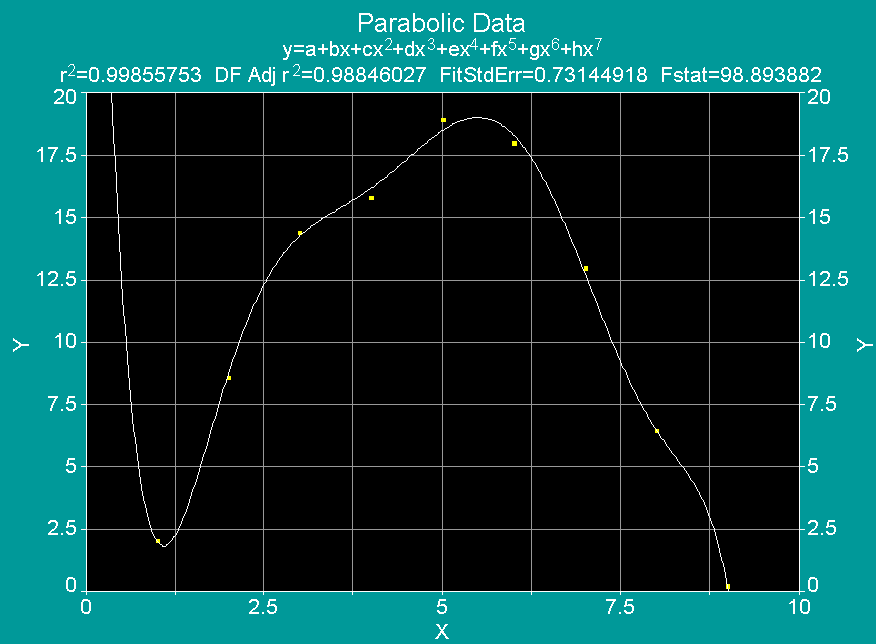
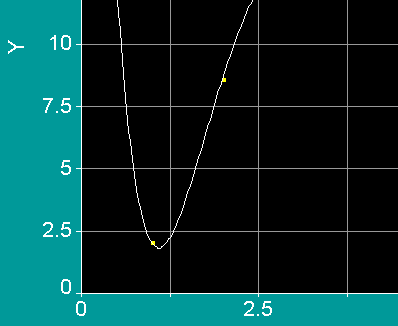
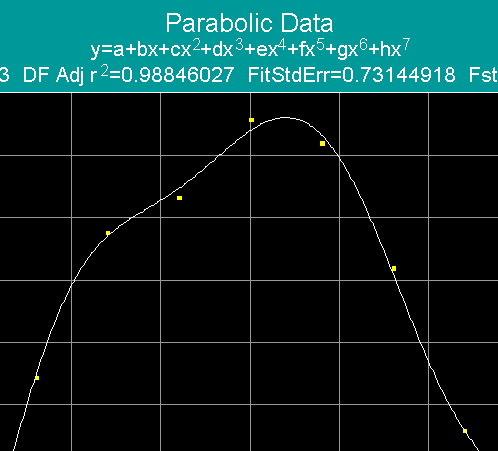
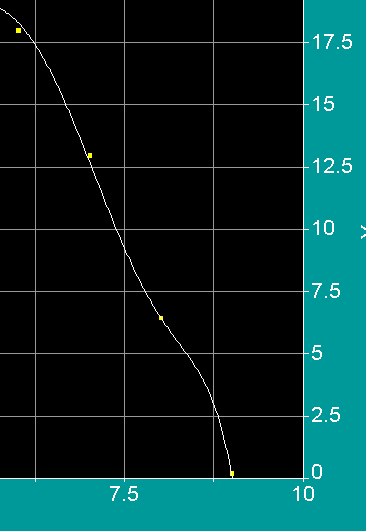
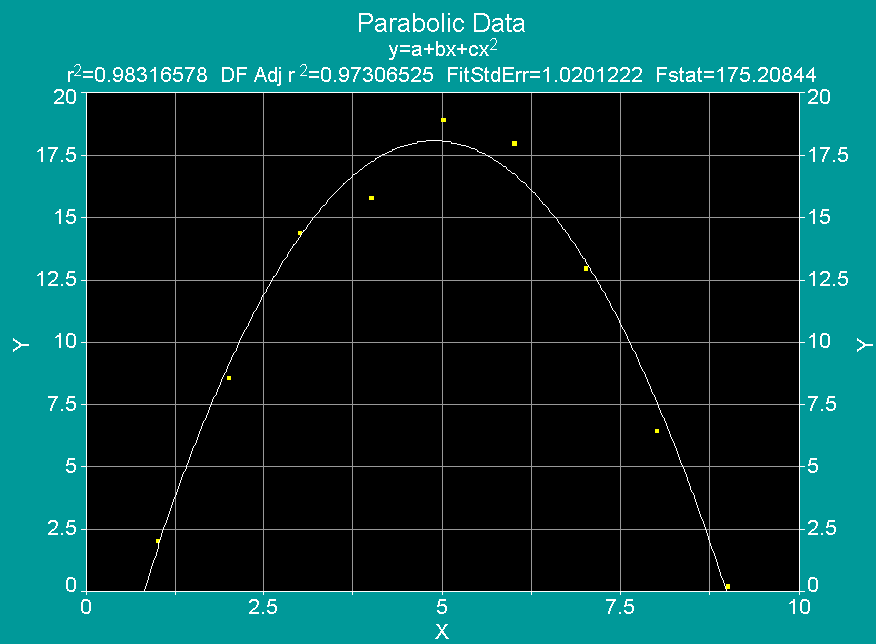
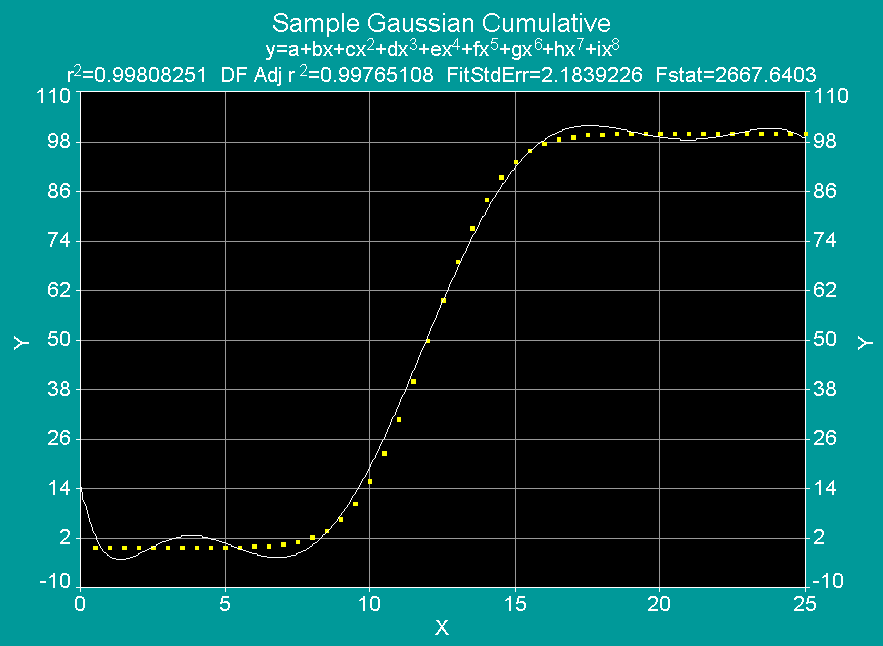
Notice how this 10th order polynomial
fits the middle portion of the data set, but becomes unstable at the ends of
the X data range, where it's a straight line. Polynomial equations will create
their characteristic “sine wave” pattern when they are fitted to straight
lines.